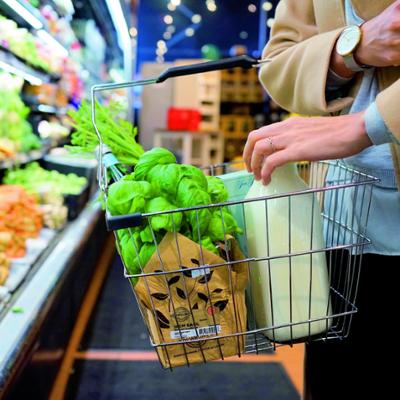

What does the fresh fruit and vegetable shopping basket look like? Consumers respond
At what times of the day do the different targets prefer to consume fruit and vegetables, what factors are gaining importance beyond price, how are online shopping habits for this type of fresh produce progressing, has inflation affected households...? These are some of the questions that Alimarket FMCG has asked in a survey carried out exclusively in collaboration with Appinio, the results of which we analyse below.
Fruit and vegetable buyers have changed in recent years: they have evolved, they are more informed, they are more daring with new products and they have incorporated the most up-to-date formats into their lifestyles, as well as new moments for consuming them. And all of this is thanks to the fruit and vegetable sector and its operators, who have been able to read this market evolution and continue their efforts to adapt to its preferences. However, it seems that the inflationary spiral in which our country is immersed has modified some of these habits.
In this context, Alimarket FMCG has asked consumers about their current purchases of fruit and vegetables through an exclusive survey carried out in collaboration with Appinio, with a sample of 1,000 respondents. The topics? Moments of consumption, preferred sales systems, physical and online shopping habits or changes perceived in the establishments in the last year, among others.
Price matters, but quality matters more
The first conclusion to be drawn from this survey is that inflation has changed the way 88% of the 1,000 participants in the survey shop for fruit and vegetables. What is more, almost 70% have noticed that the price of these fresh foods has gone up in the last year in their favourite supermarket (although only 21% have opted to change supermarket). However, as a result of this increase in price, 36.3% have decided to buy cheaper items, while 34.2% have reduced their shopping frequency and 32.5% have reduced the number of items they buy.
The good news here is that, despite this inflationary context, price is still the third priority for shoppers (35.6%), behind quality and taste (70.2%) and seasonal products (59.1%).
Bulk still reigns supreme
On the other hand, there are a number of deep-rooted habits which, to date, neither the pandemic nor price increases have managed to change. One of these is the preference for bulk (65.3%) over packaged food (9.4%), as this system is perceived as more sustainable, as well as being better suited to the needs of new types of families, such as single-parent families.
Likewise, lunch remains the preferred time of day for eating fresh fruit and vegetables (59%), followed by dinner (44.1%) and breakfast (25.4%). However, snacking is gaining ground and is now in fourth position, with a share of 22.4%. In terms of trends, it is surprising that frozen products (41.5%) are ahead of sector classics such as pre-prepared and pre-cooked convenience salads - with percentages of 40.5% and 39.4%, respectively - as the most popular items purchased in these sections, after fresh fruit and vegetables.
Consumers return to the physical shop
Now that the restrictions on mobility have been lifted, customers have returned to the physical shop, basically because they prefer to choose their fruit and vegetables "in situ" in the establishment, as well as being able to compare prices and view offers more effectively.
Thus, based on this study, 37% of those surveyed say that they have reduced their shopping frequency on the Internet, compared to 20.8% who have increased it and 42.3% who have not changed it. At the same time, 60.6% say that they "never or almost never" buy these foods online, compared with 12.5% who do so "always or almost always" and 26.9% who only "sometimes" do so.






